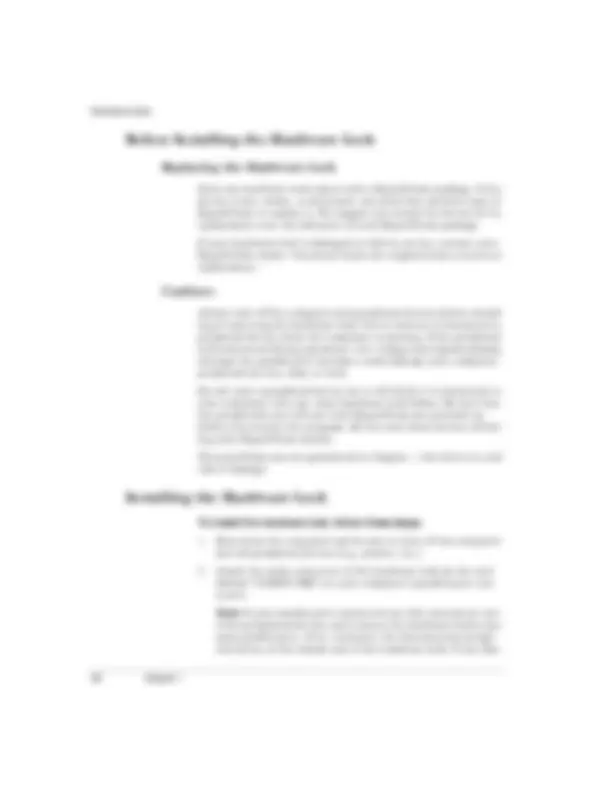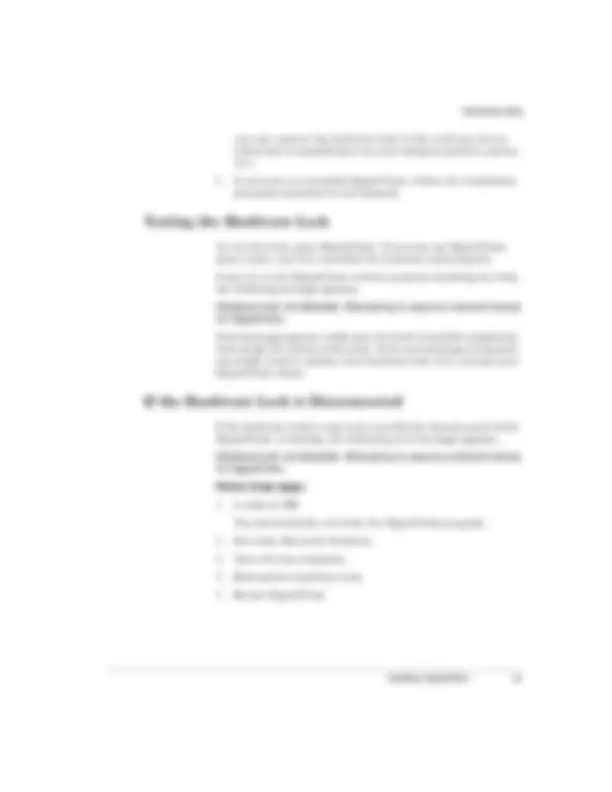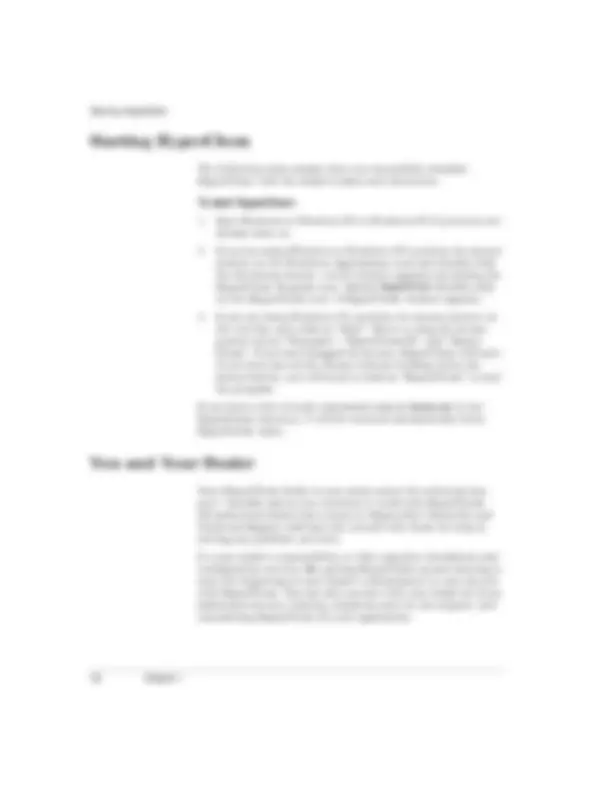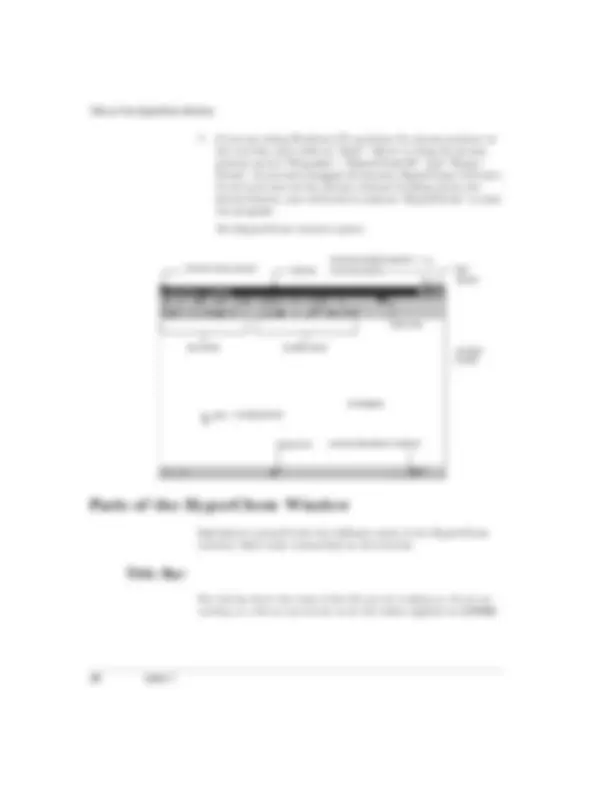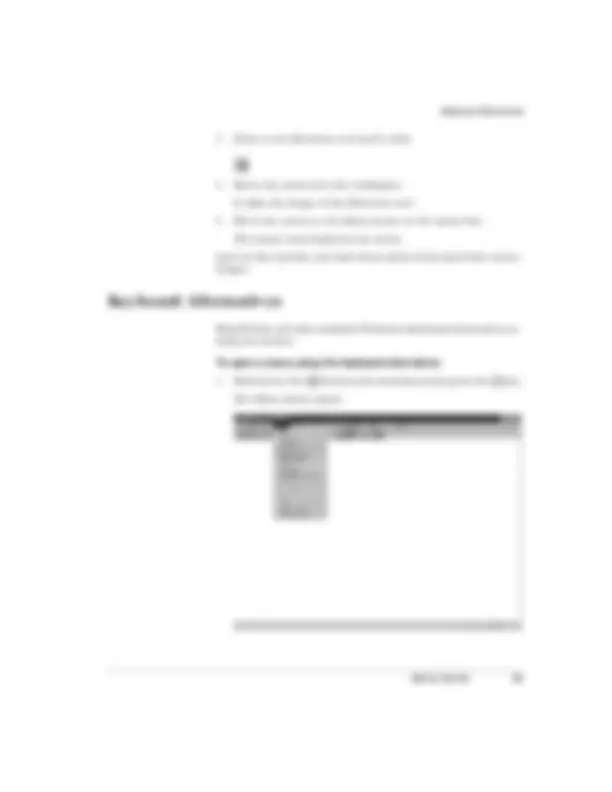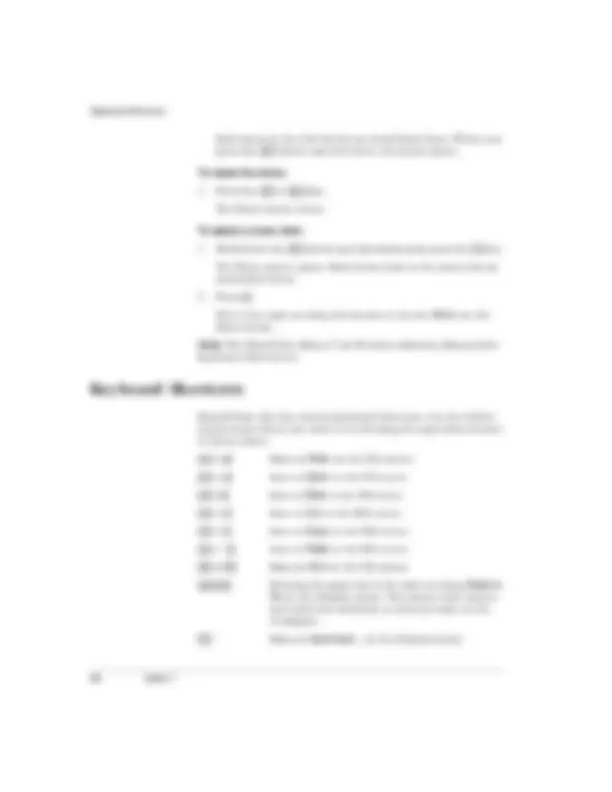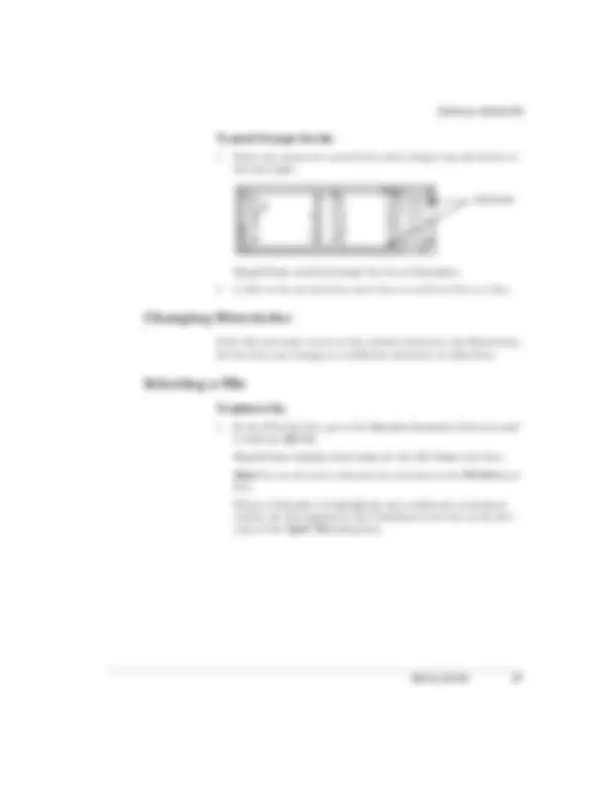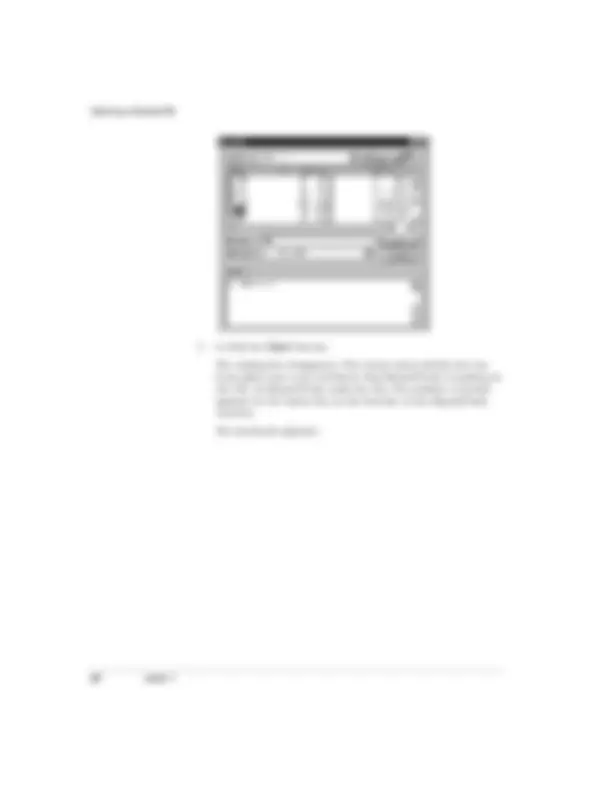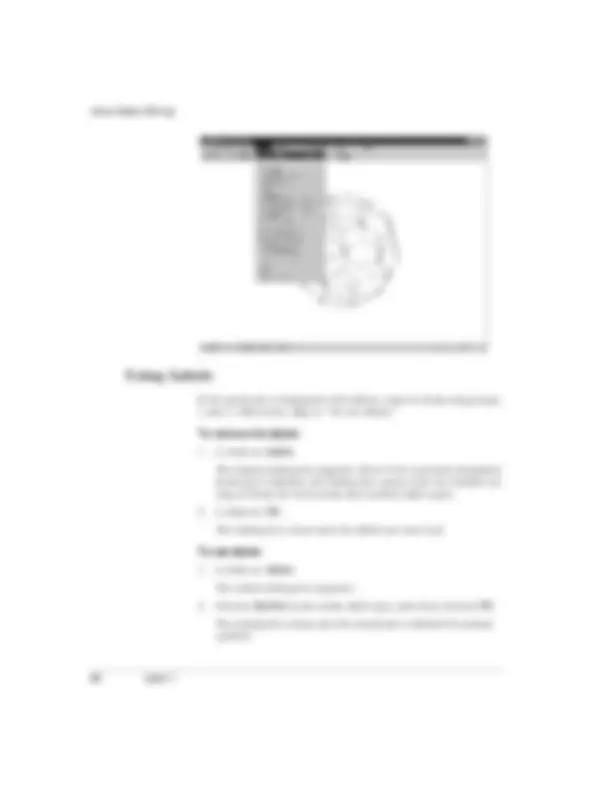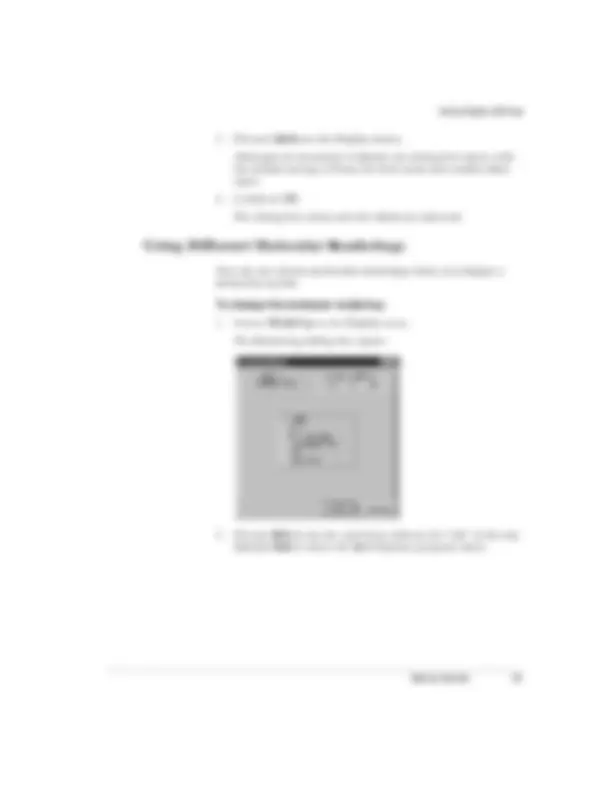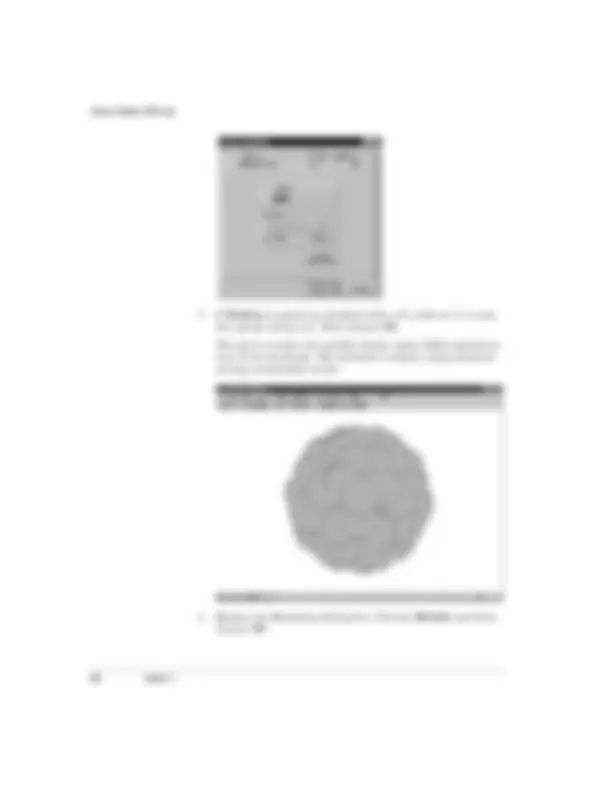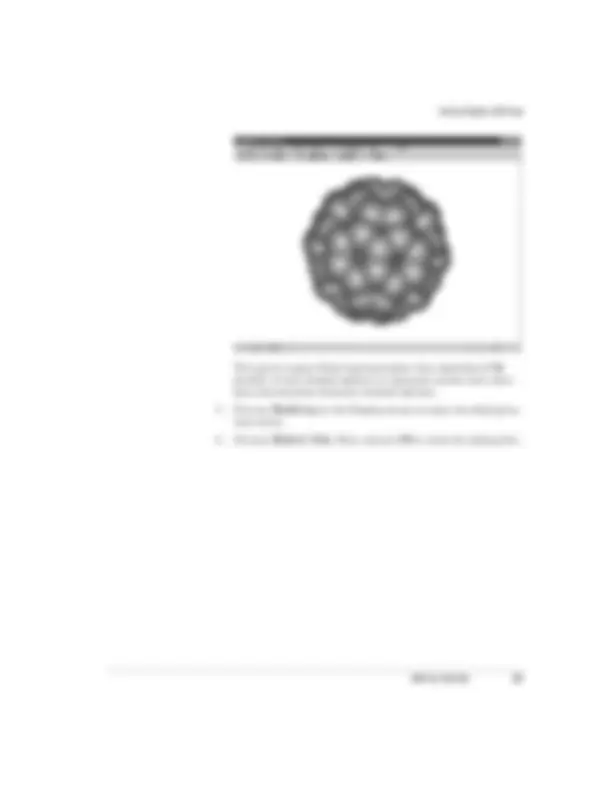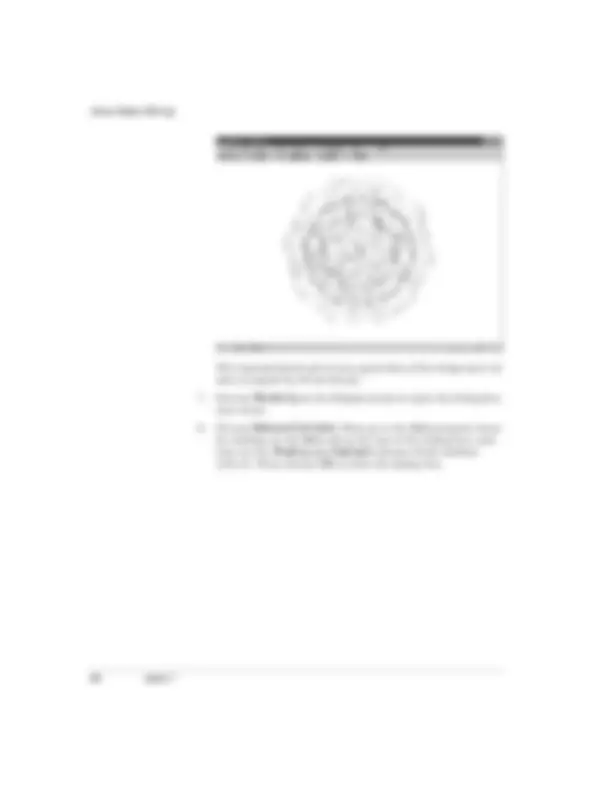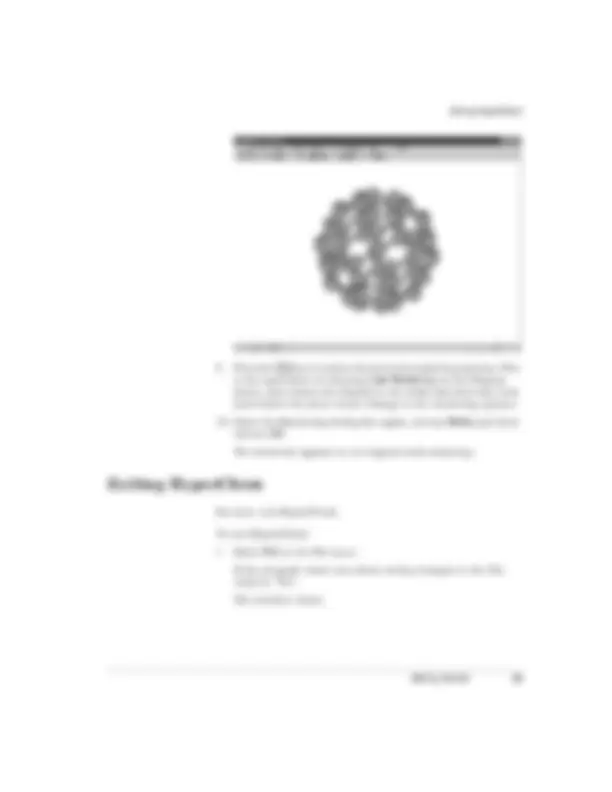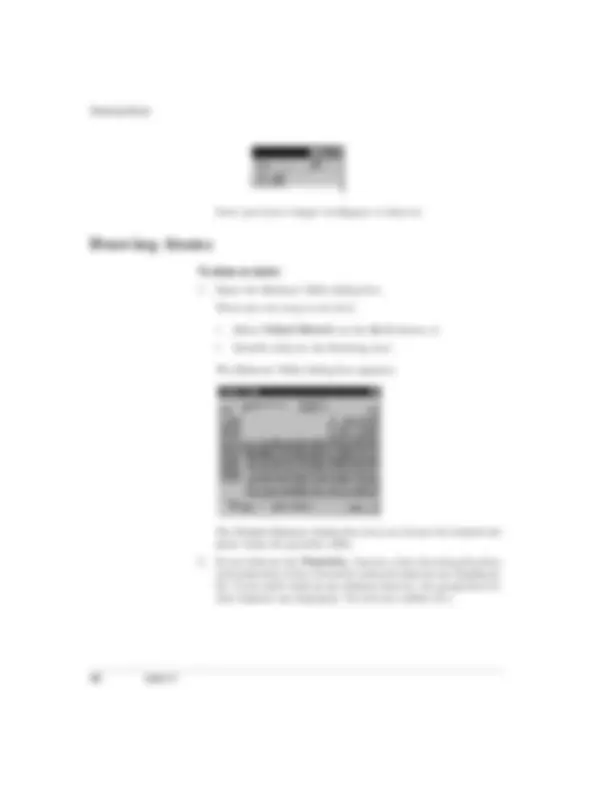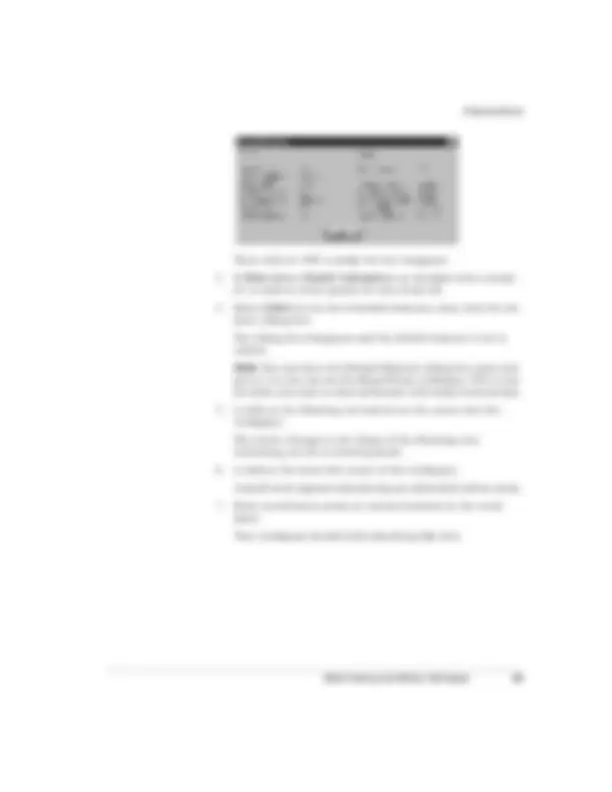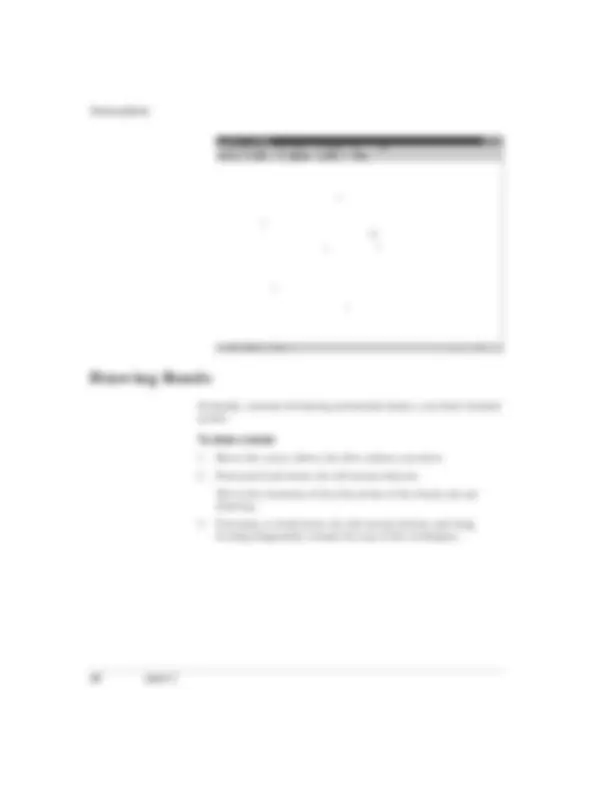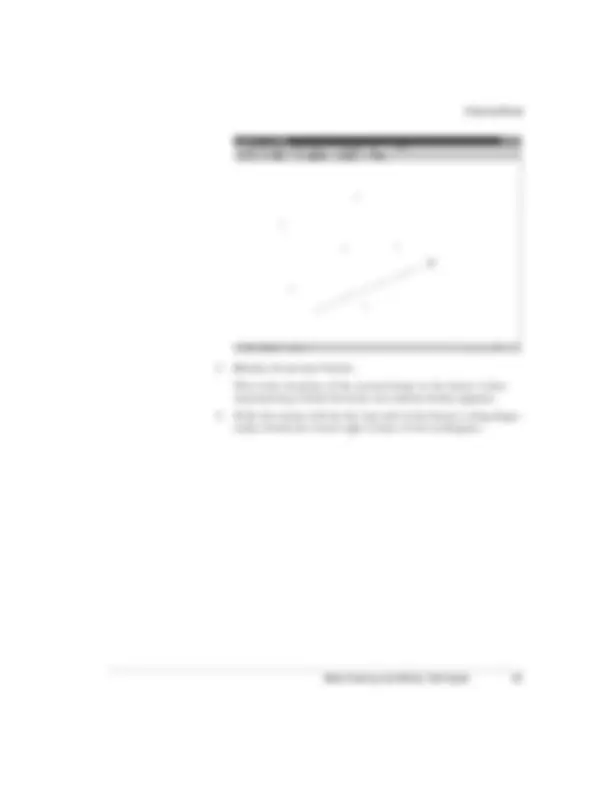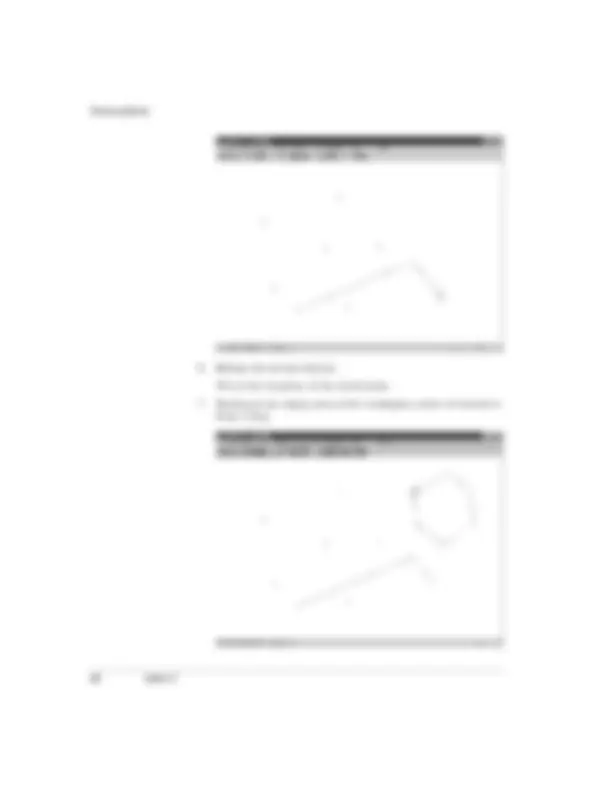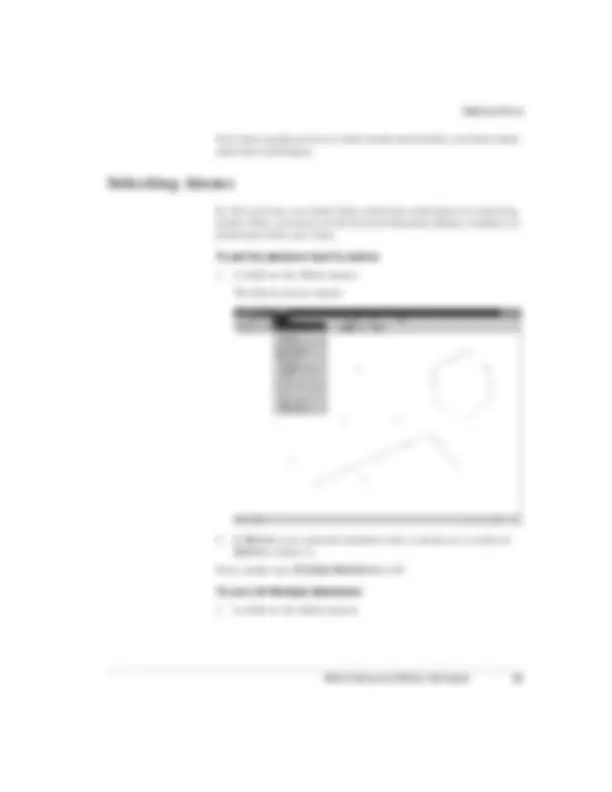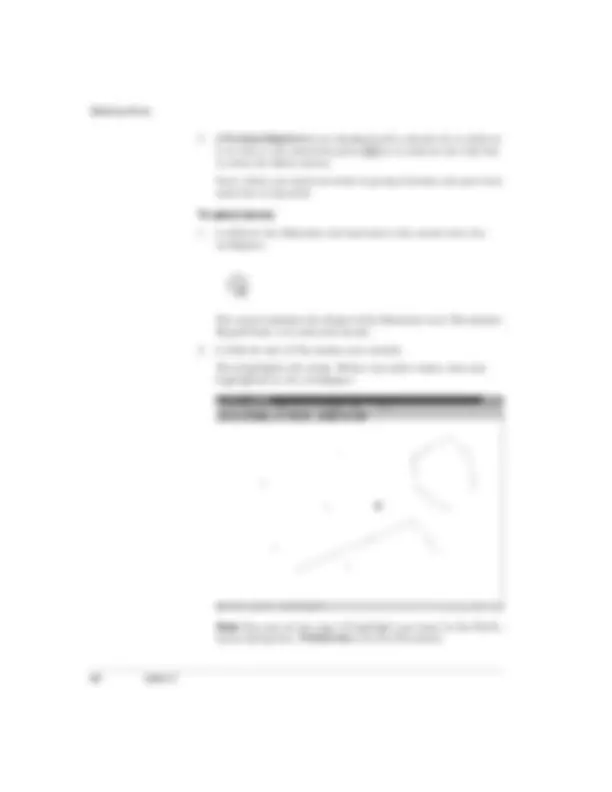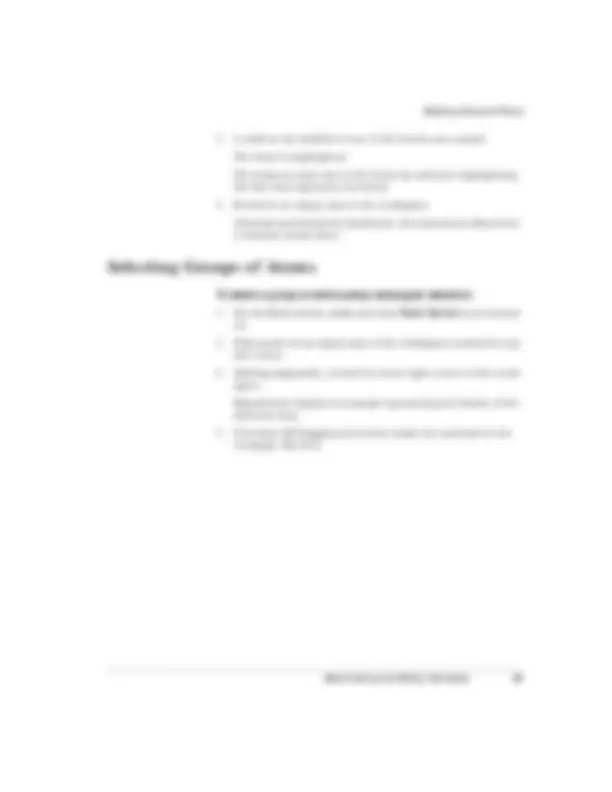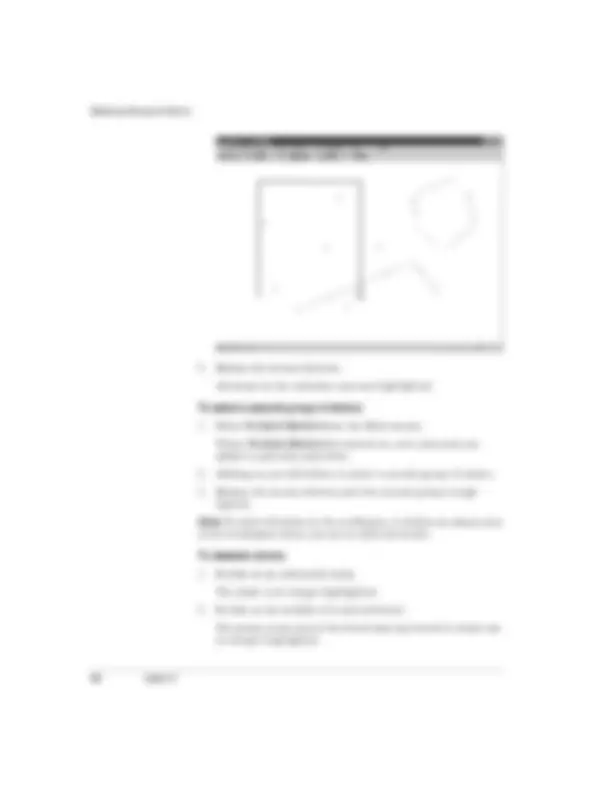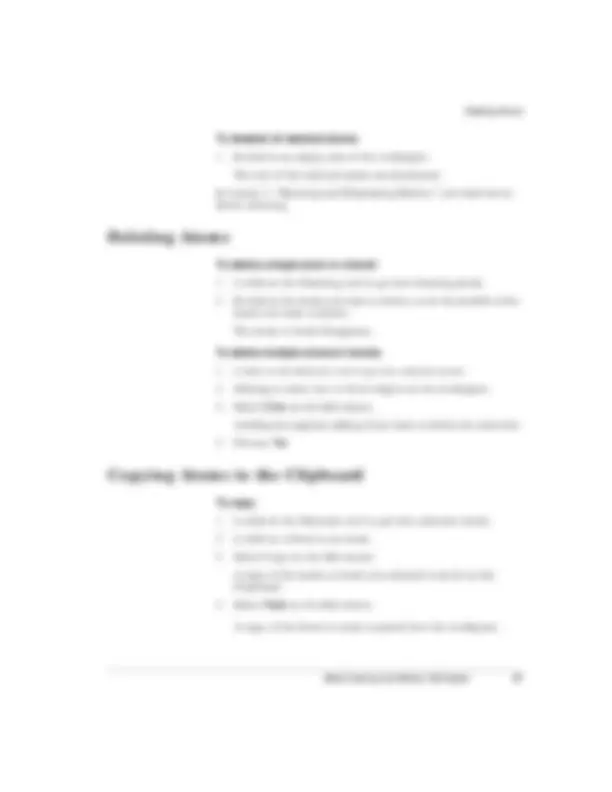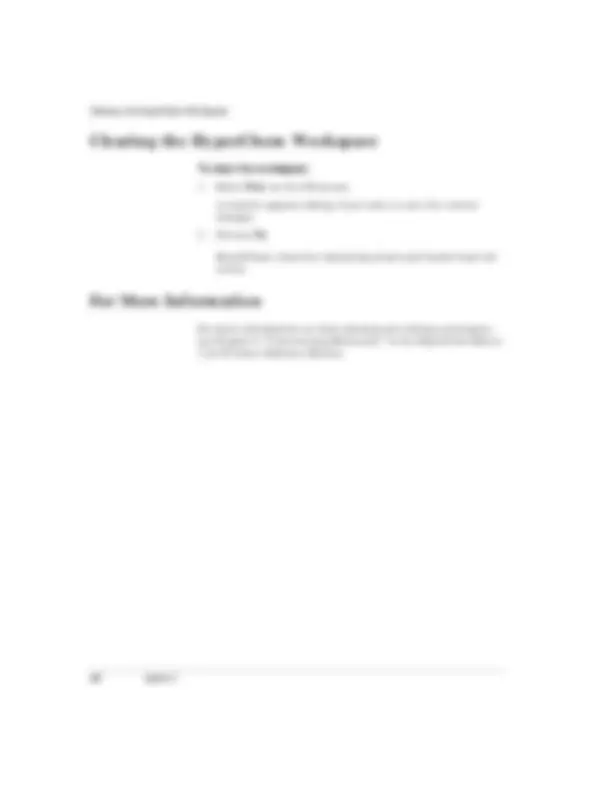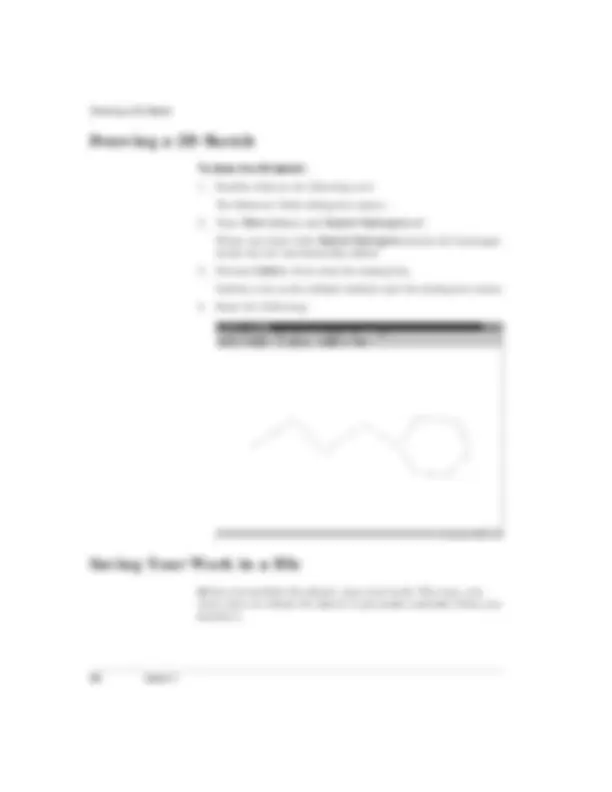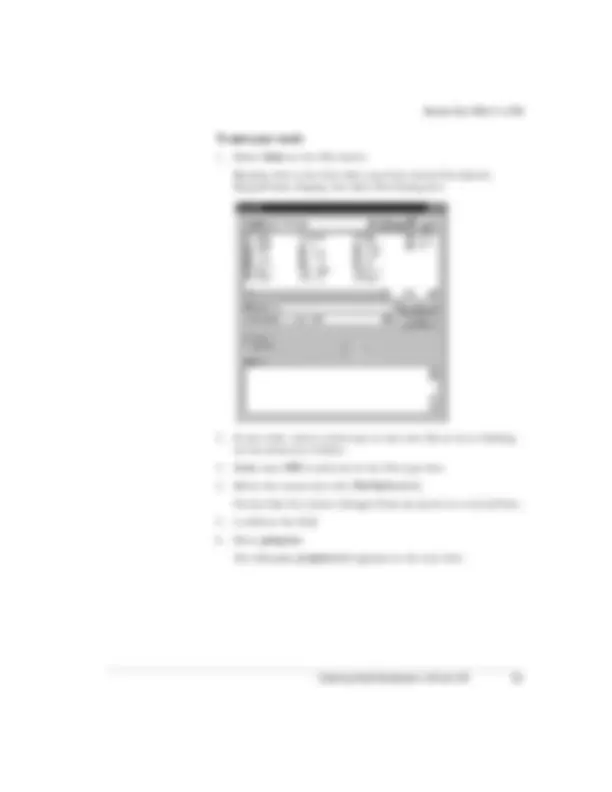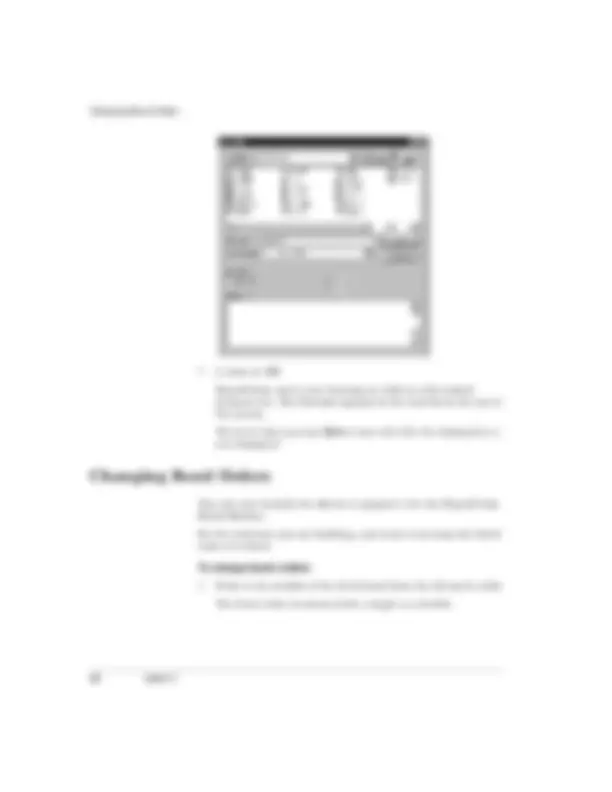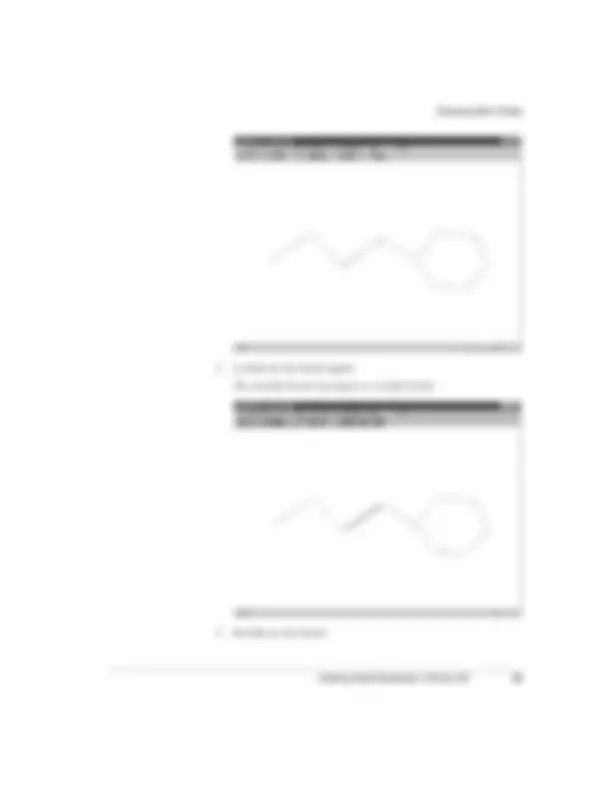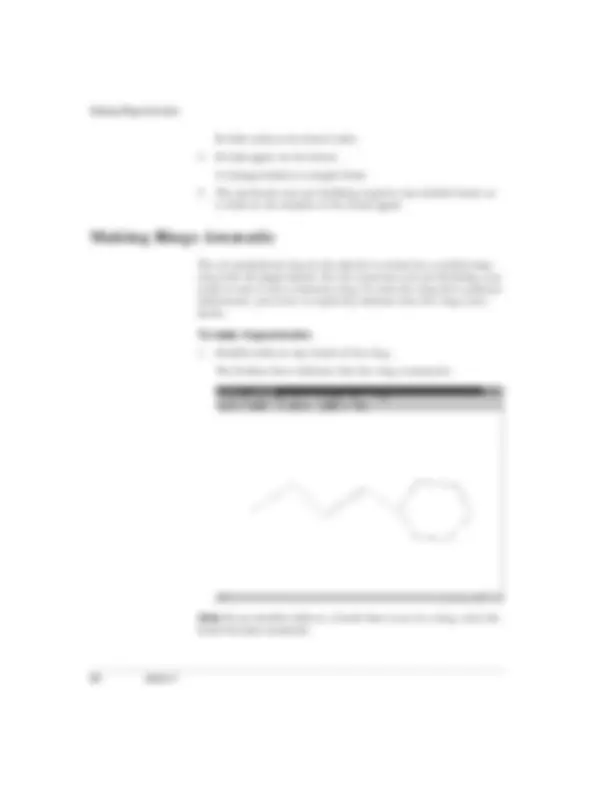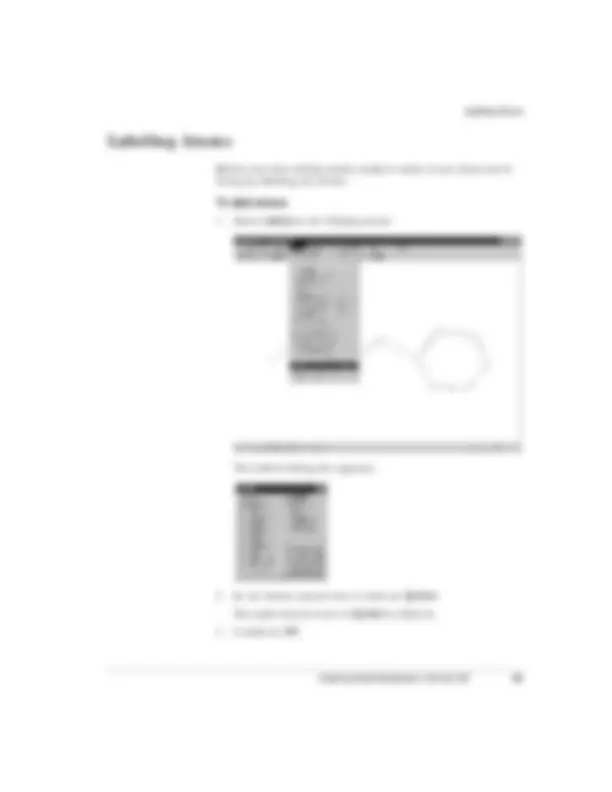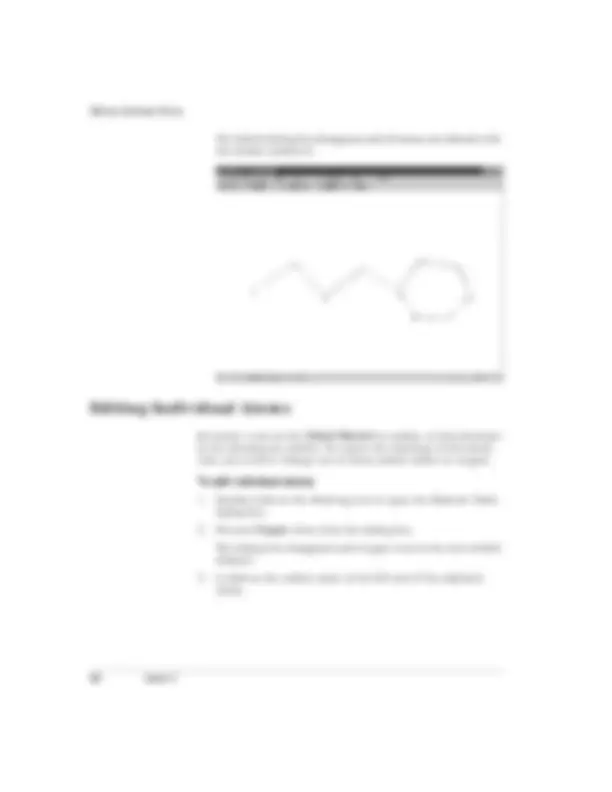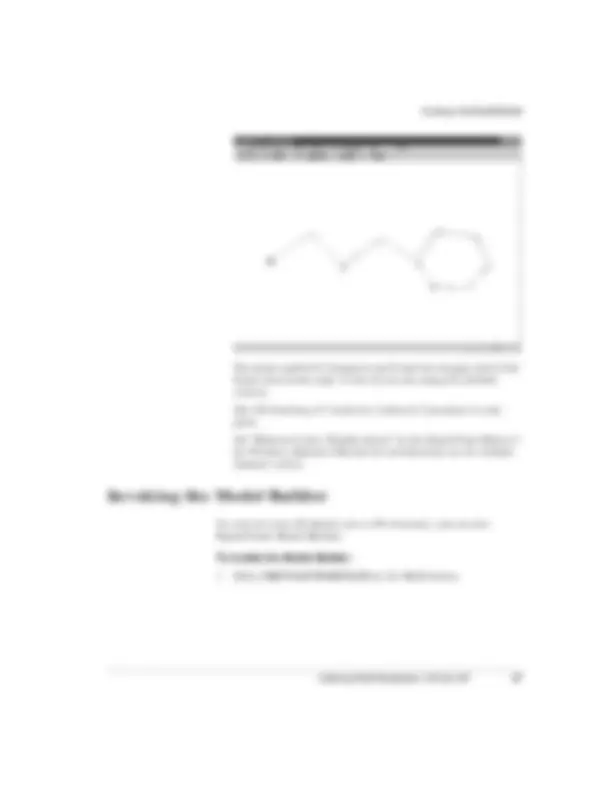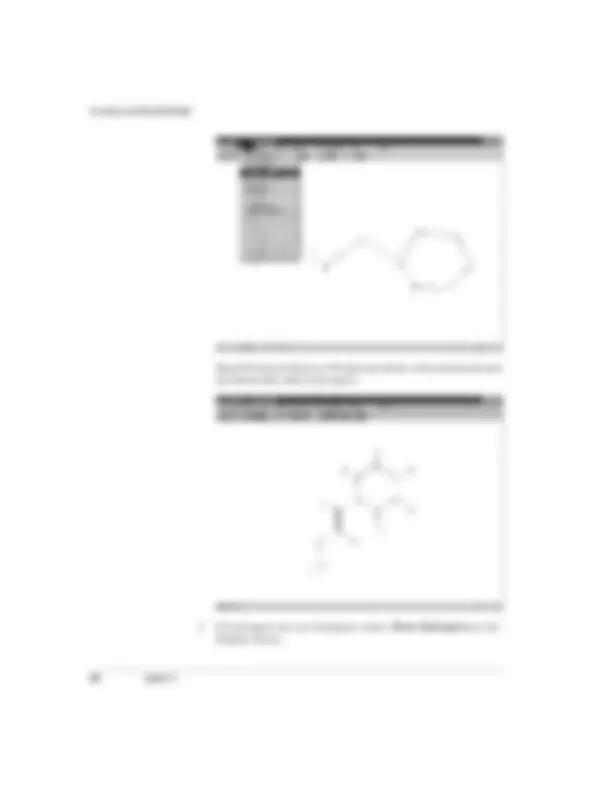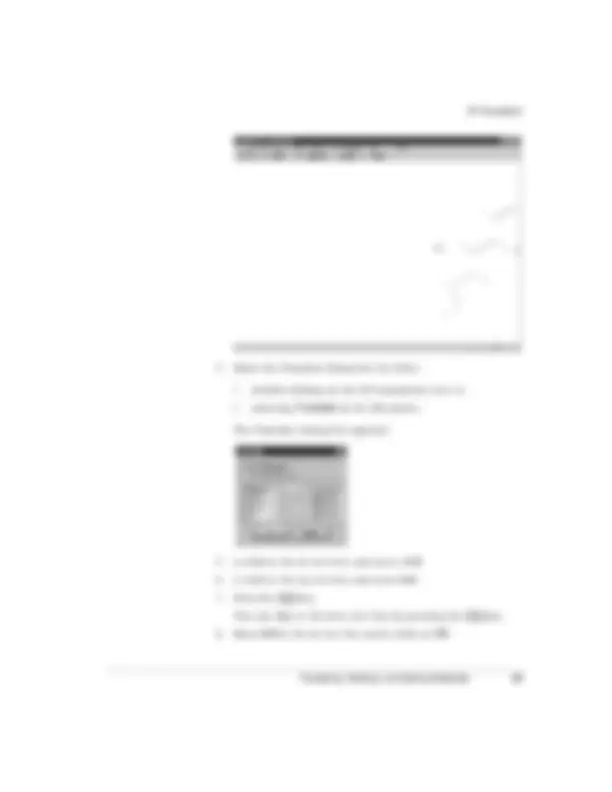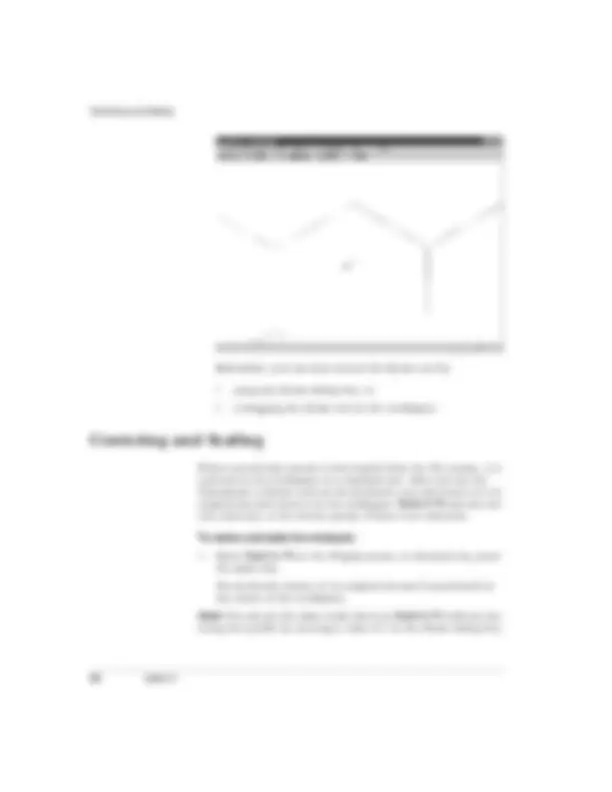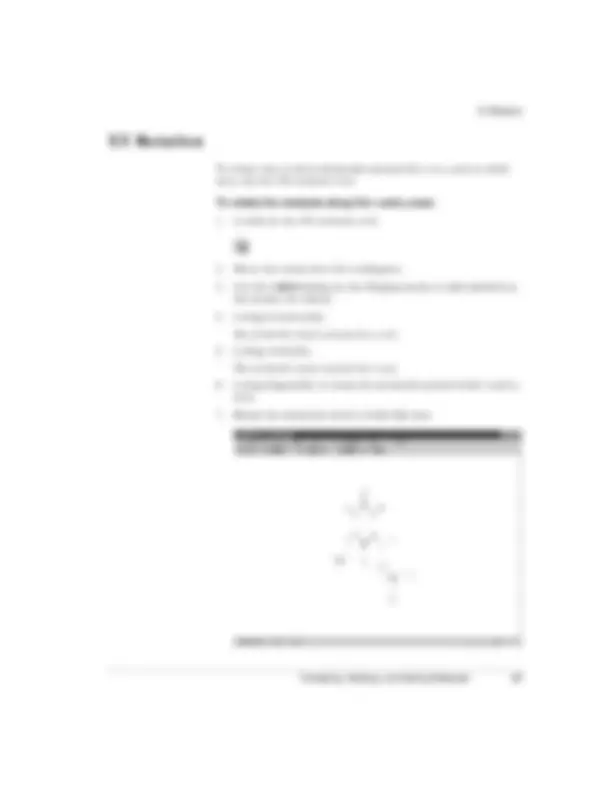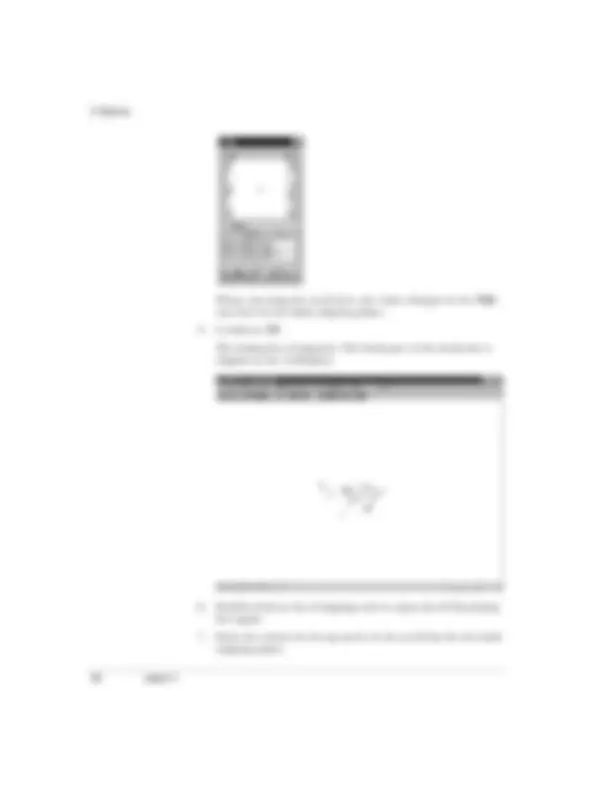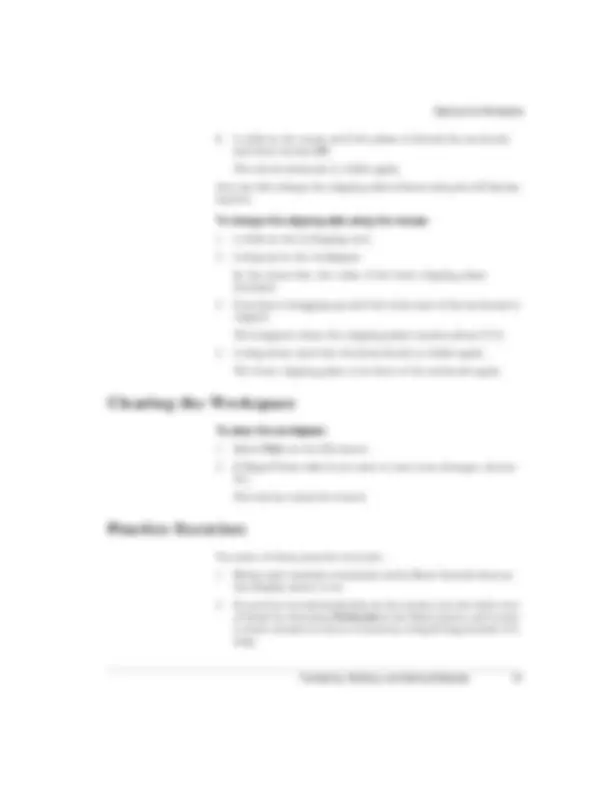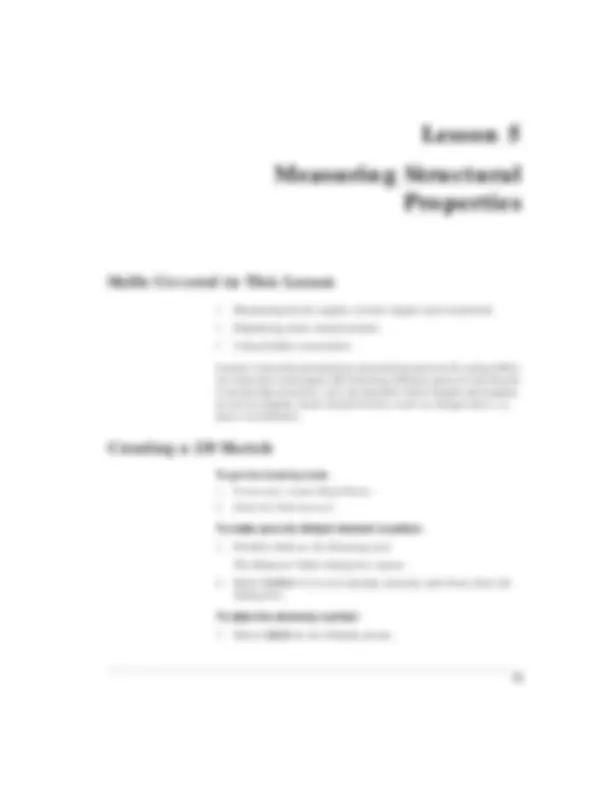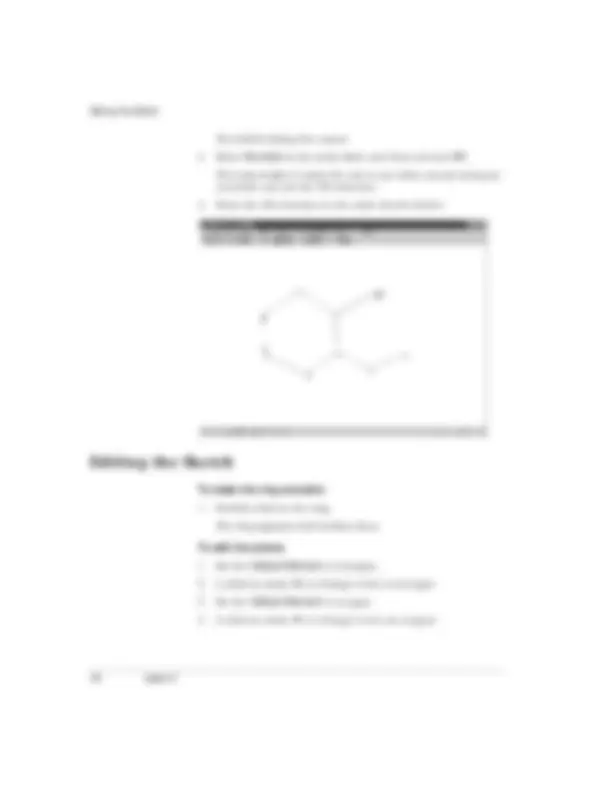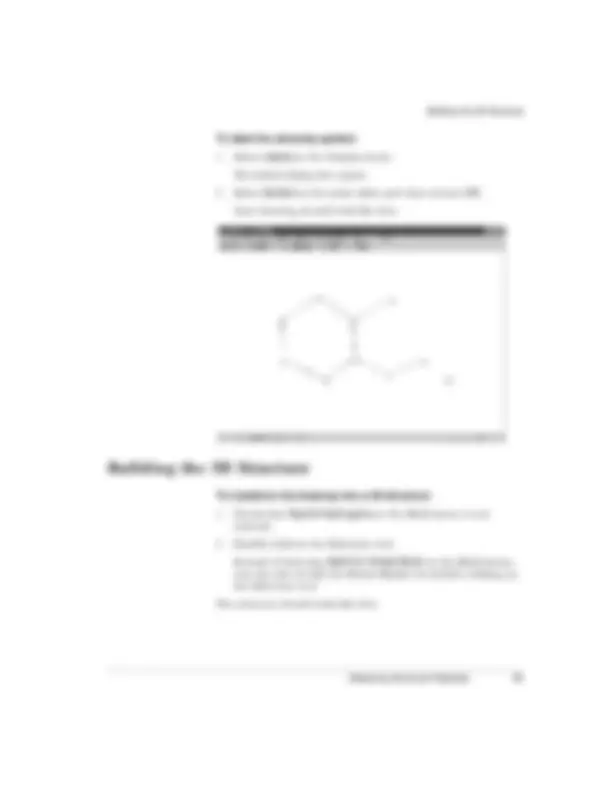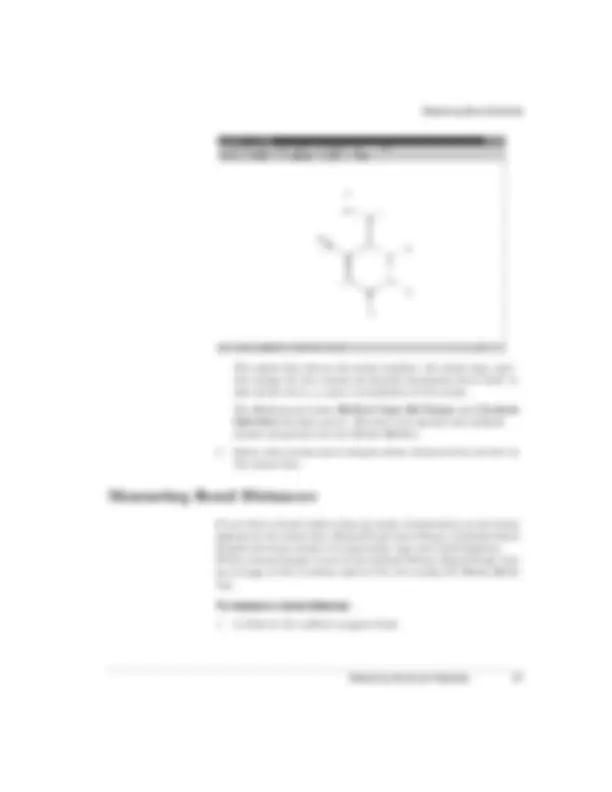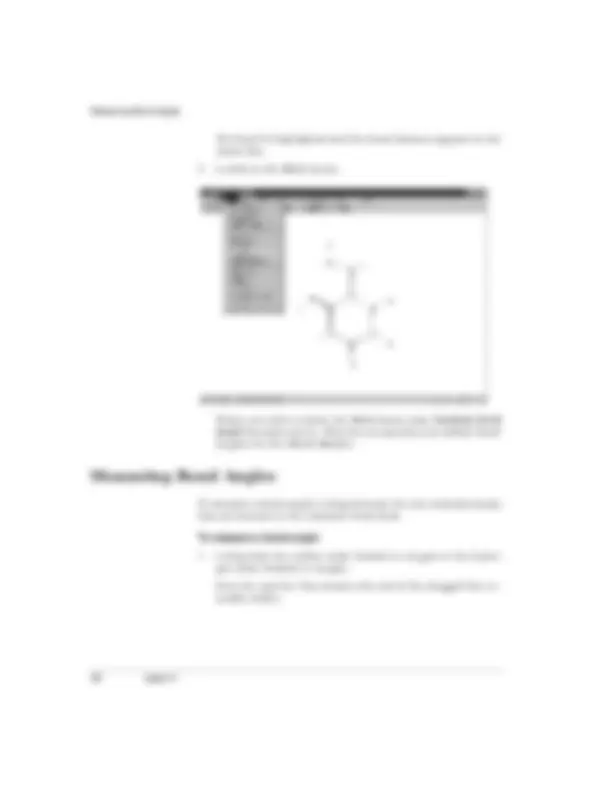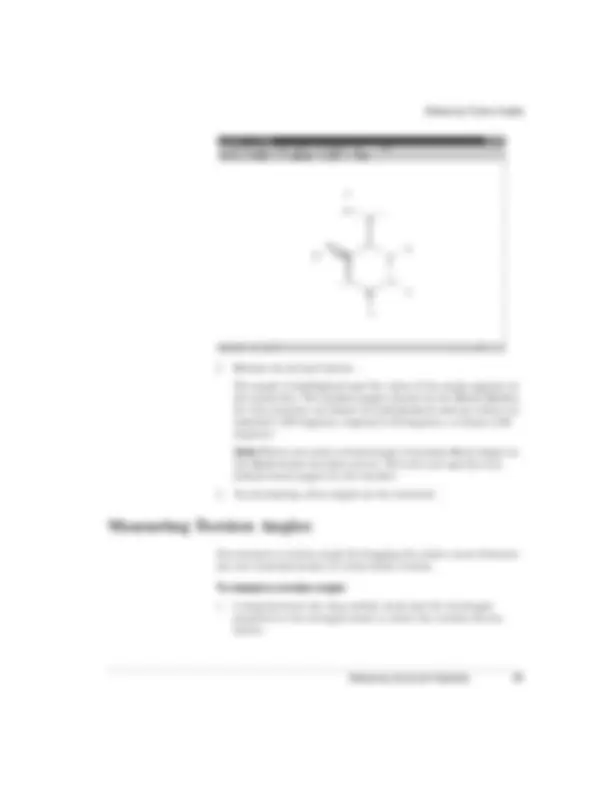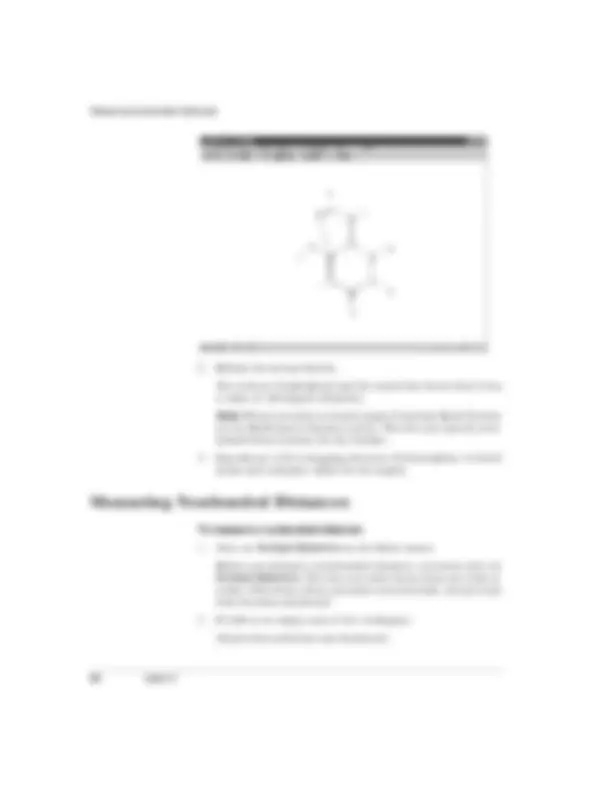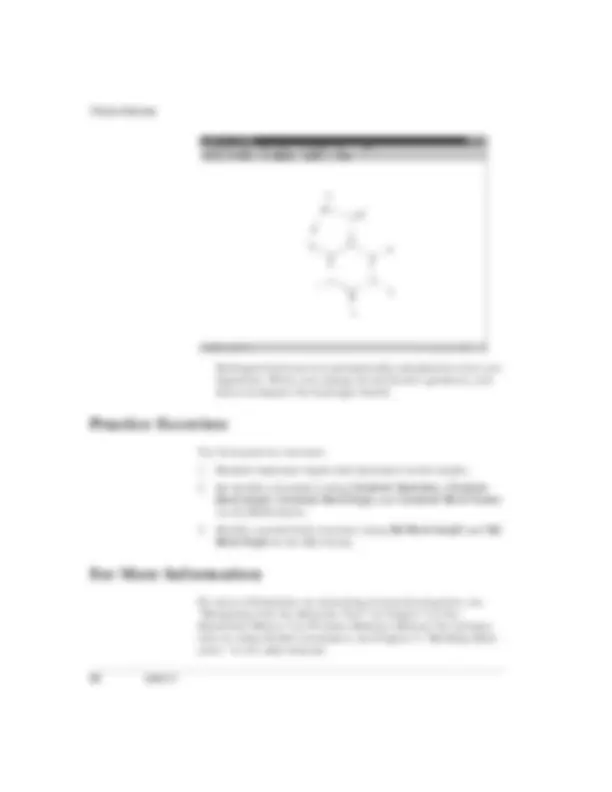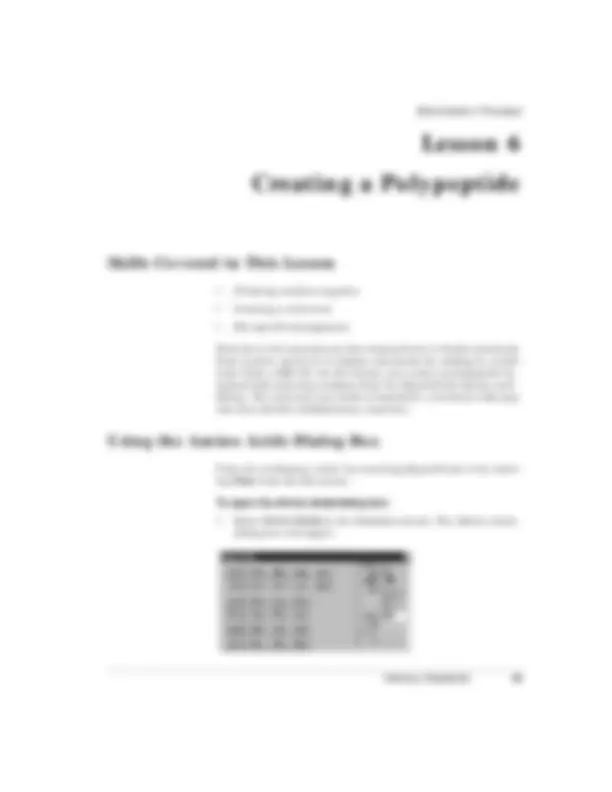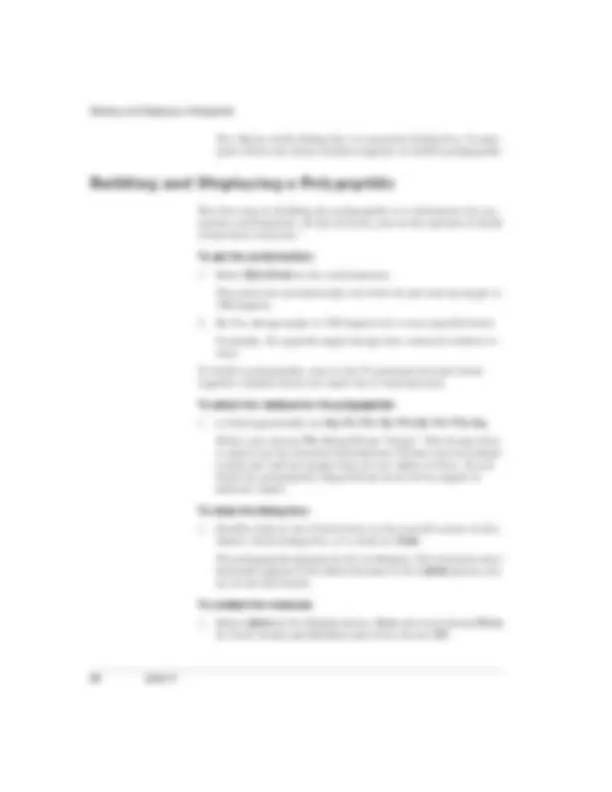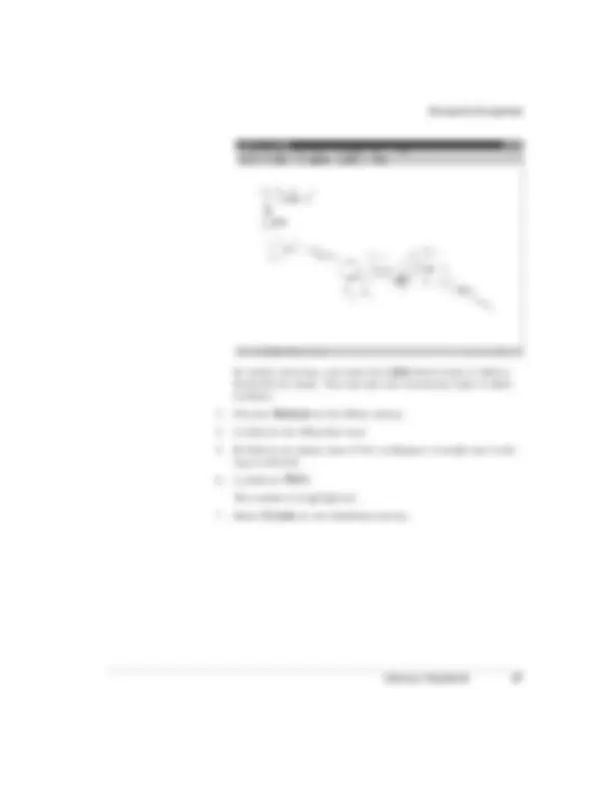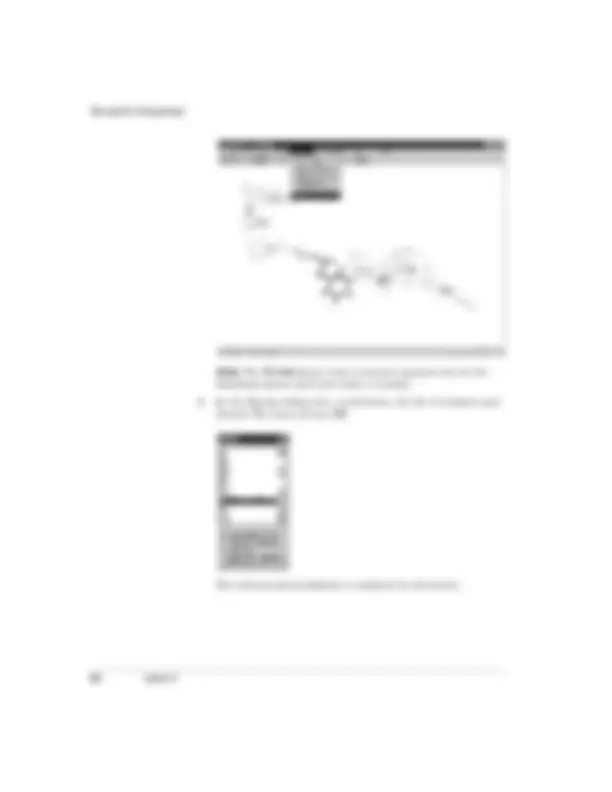Download Hypercube, Inc. - Physical Chemistry Laboratory | CHEM 435 and more Lab Reports Physical Chemistry in PDF only on Docsity!
Publication HC50-00-01-00 October 1996
Hypercube, Inc.
HyperChem
Release 5.
for Windows
Getting Started
PRINTED IN CANADA
Copyright © 1996 Hypercube, Inc.
All rights reserved
The contents of this manual and the associated software are the property of Hypercube, Inc. and are copyrighted. This publication, or parts thereof, may not be reproduced in any form, by any method, for any purpose.
HYPERCUBE, INC. PROVIDES MATERIALS “AS IS” WITHOUT WARRANTY OF ANY KIND, EITHER EXPRESSED OR IMPLIED, INCLUDING BUT NOT LIMITED TO ANY IMPLIED WARRANTIES OR CONDITIONS OF MERCHANTABILITY OR FITNESS FOR A PARTICULAR PURPOSE. IN NO EVENT SHALL HYPERCUBE, INC. BE LIABLE TO ANYONE FOR SPECIAL, COLLATERAL, INCIDENTAL, OR CONSEQUENTIAL DAMAGES IN CONNECTION WITH OR ARISING OUT OF PURCHASE OR USE OF THESE MATERIALS, EVEN IF HYPERCUBE, INC. HAS BEEN ADVISED OF THE POSSIBILITY OF SUCH DAMAGES ARISING FROM ANY DEFECT OR ERROR IN THESE MATERIALS. THE SOLE AND EXCLUSIVE LIABILITY TO HYPERCUBE, INC., REGARDLESS OF THE FORM OF ACTION, SHALL NOT EXCEED THE PURCHASE PRICE OF THE MATERIALS DESCRIBED HEREIN.
Hypercube, Inc. reserves the right to revise and improve its products as it sees fit.
Hypercube Trademarks
HyperChem is a registered trademark of Hypercube, Inc. HyperMM+, HyperNewton, HyperEHT, HyperNDO, HyperGauss, HyperNMR and ChemPlus are trademarks of Hypercube, Inc.
Third Party Trademarks
Microsoft, MS-DOS, and Excel are registered trademarks, and Windows , Windows NT, and Windows 95 are trademarks of Microsoft Corporation. MM2 is a trademark of Dr. Norman Allinger, University of Georgia. CHARMm is a registered trademark of Molecular Simulations Inc. IBM is a registered trademark of International Business Machines Inc. All other brand and product names are trademarks or registered trademarks of their respective holders.
Introduction
Welcome to HyperChem®, the molecular modeling and
simulation software that lets you perform complex chemical
calculations on your desktop computer. HyperChem comes with
three manuals: Getting Started , Reference , and Computational Chem-
istry.
Getting Started contains the following parts:
- Chapter 1, “ Installing HyperChem ,” contains information on
installation procedures, system requirements, starting Hyper-
Chem, and product support.
- Chapter 2, “ Learning HyperChem, ” contains four tutorials. The
first tutorial introduces the HyperChem interface and menu
system; the second focuses on chemical calculations; the third
focuses on ab initio quantum mechanical calculations; the
fourth gives instruction in communicating with HyperChem
from other software.
- An index, which covers the topics discussed in Learning Hyper-
Chem.
Reference contains the following parts:
- “ Reference ,” which discusses HyperChem features and general
procedures. Use this manual to find in-depth information on
any topic.
- A comprehensive glossary, which lists important terms and
concepts used in the HyperChem documentation.
- A master index, which covers Getting Started , Reference , and
Computational Chemistry.
Introduction
Computational Chemistry contains the following parts:
- The Practical Guide gives you an overview and introduction to
the calculations you can run with HyperChem.
- Theory and Methods is a technical reference, giving you detailed
information on the specific implementation of calculations in
HyperChem. You can find information here on customizing
HyperChem.
- An index, which covers the topics discussed in Computational
Chemistry.
HyperChem’s standard manual set also includes on-line documen-
tation. Use the HyperChem on-line Help to give you quick access
to information as you work in HyperChem.
Readme.txt contains information on late developments not
included in the printed manuals.
4 Chapter 1
System Requirements
your computer before installing HyperChem. Some versions of
HyperChem may run under only some of these operating systems.
Operating System Software
You must have Version 3.1 or later of DOS to run HyperChem for
Windows; we recommend you use Version 5 or higher. If you have
Windows NT or Windows 95, you do not need DOS.
HyperChem® requires the following minimum equipment:
Computer
IBM®, COMPAQ®, Hewlett-Packard®, NEC®, or a true 386 or 486
or Pentium or P6 compatible CPU (80386™ CPU must be step B
or higher).
Math Coprocessor
An Intel® 80387™ math coprocessor or equivalent. On the
80486 DX, Pentium, and P6, the math coprocessor is an integral
part of the chip. Computers using Intel 80486 SX require an 80487
SX coprocessor.
Memory
At minimum, you must have 8 MB of random access memory
(RAM). If you want to study large systems, we recommend that you
have at least 16 MB.
Storage/Disk Drive
We recommend you have a hard disk with at least 32 MB free.
HyperChem program files require approximately 12 MB, and
all of the sample files and supplementary need about 20 MB.
Display
HyperChem supports video displays that are compatible with
Microsoft® Windows™, including IBM Video Graphics Array
(VGA or Super VGA). We strongly recommend a color display
capable of displaying at least 256 simultaneous colors.
Installing HyperChem 5
Registering HyperChem
Pointing Devices
You must have a Microsoft Mouse, or other pointing device com-
patible with Microsoft Windows.
Optional Hardware
You can use the MS® Windows settings to add and choose a
printer if you want to print the molecular images created with
HyperChem.
Starting HyperChem
Your HyperChem package includes a license agreement that you
should read carefully. It explains our obligations to you, and yours
to us. After reading the agreement, fill out the Registration Card
and mail it back to us.
If You Have a Hardware Lock
If your copy of HyperChem includes a hardware lock (which will
be the case unless you are using a network version of the software),
please read “Hardware Locks” on page 9 before installing Hyper-
Chem.
Installing HyperChem
The HyperChem setup program decompresses HyperChem files
and copies them to your hard disk.
HyperChem is released on CD-ROM or in 3 1/2-inch disk format.
Normally, you run the setup program from a CD drive (usually
drive D) or a floppy disk drive (usually drive A or drive B). The fol-
lowing steps refer to drive D. Use the drive that corresponds to your
release disk format and machine.
To install HyperChem:
1. Place the CD, or Disk 1, in your drive.
2. In Windows 95 or Windows NT 4, click on Start on the Task-
bar, and choose Run. In Windows 3.1x or Windows NT 3.51,
Installing HyperChem 7
Sharing System Files on a Network
The HyperChem Installation Type dialog box appears. which
provides options for installation of HyperChem. If you are
installing from floppy disk, the Express option is the same as
full installation into a single directory. If you are setting up to
use a networked copy of HyperChem, only local configuration
files will be copied to the directory that you specify.
7. Choose the appropriate installation type and then follow the
on-screen instructions.
Important : HyperChem requires Initialization Files, Executable
Files, and Parameter Files to operate properly. If you do a cus-
tom installation and you do not install these options, you
must indicate in the Location text boxes where the current ver-
sions of these files reside. This information is saved in win.ini
regardless of whether or not the options are checked.
Note : If something goes wrong during the installation, or if
you want to quit before the installation completes, L-click on
Cancel or press [Esc]. To stop the installation, L-click on Yes or
press [Return]; to resume the installation, L-click on No or press
the [N] key. Some files will be left on your hard disk. You can
delete these files or restart the install program. When you
restart, the program copies over the existing files, unless the
options or destination are different.
When the software is installed, the HyperChem Setup Comple-
tion dialog box appears. This reminds you to complete your
HyperChem registration card and install the hardware lock
before you run HyperChem (if you have a locked version of the
software).
8. Choose OK.
If you specified a full installation, or a custom installation with
executable files, a HyperChem group and icon is added to the
Program Manager. If you use Windows 95 or Windows NT 4,
you can create a shortcut to start HyperChem directly from
your Desktop.
Sharing System Files on a Network
You can share HyperChem files over a network by installing
HyperChem on a network mountable disk drive. Each licensed
user’s PC can then access HyperChem by mounting the network
8 Chapter 1
Registry Settings
drive containing the HyperChem files. If the version of
HyperChem is locked, each PC running HyperChem requires a
hardware lock if it cannot get a license to run from the network.
The server does not require a hardware lock if it will not be used to
run HyperChem.
HyperChem requires three groups of system files: initialization,
executable, and parameter files. If these are installed on a net-
worked drive, a licensed user needs to install only the initialization
files and specify the location on the network drive for the execut-
able and parameter files.
We recommend that shared system files have read-only access
when they are network mounted. If you want to modify personal
copies of parameters, you should install parameter files in addition
to initialization files in a nonshared location. If you want modified
or additional parameter files to be available to all network users,
you should put these files in the shared network location, and
make them read-only as well.
Registry Settings
In Windows 95 and Windows NT, the HyperChem setup program
creates entries in the Registry for all of the settings that Hyper-
Chem needs to find its files and to open the workspace with the
same options as when it was last closed. You can change settings
in the Registry by clicking on the Start button on the taskbar,
opening the Run dialog box by selecting Run, and entering regedit
in the text box.
Win.ini Settings
In Windows 3.1x, the HyperChem setup program adds five lines to
the Microsoft Windows win.ini file. If you installed HyperChem in
the HYPER directory on drive C:, the following lines appear:
[HyperChem]
ChemPath=c:\hyper
ChemIniPath=c:\hyper
ChemExePath=c:\hyper
ChemParmPath=c:\hyper














